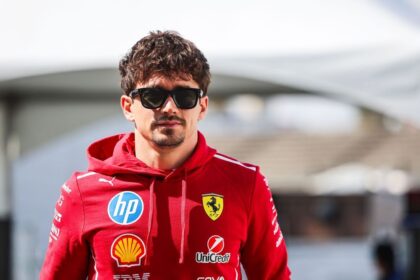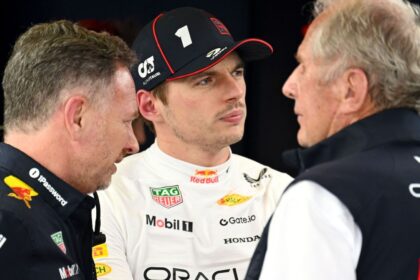McLaren Dominates Hungarian Grand Prix: Norris Beats Piastri in a Strategic Race
BUDAPEST, Hungary – McLaren Racing CEO Zak Brown left his team’s motorhome on Sunday evening, passing a group of journalists awaiting an analysis with team principal Andrea Stella. Just an hour earlier, the fight for victory between the two McLaren drivers, Lando Norris and Oscar Piastri, was centimeters away from a collision on the penultimate lap of the Hungarian Grand Prix, raising the excitement both in the pit wall and in the stands.Following the dynamic established between Brown and Stella at the helm of McLaren, Brown provided the headline, leaving Stella with the more detailed analysis of Norris’ victory over Piastri. The message was clear: McLaren has kept its promise to allow its drivers to compete, and in Budapest, they did just that. In a battle as close as Sunday’s, hindsight always offers the loser a path to victory. On this occasion, Norris’s fifth victory of the season depended on an unexpected one-stop strategy that proved to be the fastest, while Piastri, despite opting for a two-stop strategy, was seemingly at a disadvantage.“In case anyone didn’t notice,” Brown told reporters, “… that was a good race!”
Zak Brown, CEO of McLaren Racing
For Norris, the emotions took an opposite direction. After a bad start, his chances of victory seemed null, and it was as his alternative strategy developed that confidence began to grow.“You know, when you lose a race by such a small margin, it’s obviously a bit painful, but I’m sure it was entertaining from the outside,” Piastri commented. “It was also entertaining from the inside, a pretty fun race, considering everything, but obviously, when you’re on the losing side of that battle, it’s a bit difficult.”
Oscar Piastri, McLaren Driver
“I didn’t really think it was going to work for most of that second stint,” Norris said. “But with every lap, I was gaining more confidence that it was going to get closer and closer. So yeah, it was definitely rewarding.”
Lando Norris, McLaren Driver
Was the Difference in Strategies Fair?
The battle between the McLaren drivers had an added complication from the start due to the presence of Charles Leclerc in pole position. The Ferrari driver led at the first corner and initially had the pace to keep Piastri at bay, while Norris fell to fifth place on the first lap before recovering to fourth place on lap 3. McLaren had discussed the possibility of a pre-race pit stop, but greatly favored a two-stop strategy as the best. Furthermore, by initiating pit stops on lap 18 and committing to a two-stop strategy with Piastri, there was the possibility that the new tires fitted to the Australian’s car would offer a performance advantage to overtake Leclerc and take the lead.Piastri commented that he was offered a one-stop strategy in the first stint, but given his battle with Leclerc, who had seemed strong before his race pace deteriorated due to a problem with the car, he doubted it would help his situation.“Our base strategy today was a two-stop strategy,” Stella explained on Sunday night. “We didn’t necessarily believe that the single stop was possible, so with Oscar we tried to follow a good deterministic two-stop strategy, trying to overtake Leclerc at the first stop. Then we tried to extend [the duration of the second stint] with the second stop to have a [performance] tire difference to be able to have those few tenths of a second to be able to overtake Leclerc, and this worked.”
Andrea Stella, McLaren Team Principal

The key benefit of the one-stop strategy, which perhaps wasn’t fully considered before the race, was the clean air it presented to Norris. While Piastri was stuck behind Leclerc for the first two stints, Norris was able to run alone for the vast majority of his race and exploit the true performance advantage that McLaren had at the Hungaroring.
When the one-stop strategy was first offered to Norris, it meant staying out longer than he had initially planned with his first set of tires. At that point, he didn’t see the strategy itself as a path to victory, but as a way to unlock other potential benefits if a safety car or virtual safety car allowed him to make a more time-efficient pit stop.“Lando encountered a different strategy, and had more clean air, more laps in which he could use the full potential of the car,” said Stella. “Oscar spent quite a bit of time behind Leclerc, and this might have cost him a bit of time, but I think both executed their race to the highest standards.”
Andrea Stella, McLaren Team Principal
“In the end, I guess it didn’t matter. Will said, ‘What do we think about a pit stop?’ and I said, ‘Let’s do it.’ My confidence wasn’t the highest, but it was my best chance to try to do something, and it turned out to be a bit more complicated because it actually allowed me to fight to the end for the victory. I’m still not sure it was the best strategy, but I think with how difficult it was to overtake, it turned out to be pretty good.”“When Will [Joseph, Norris’ engineer] asked me, ‘What do you think about the one-stop?’ I think at that point, I was already, like, seven seconds behind Oscar and eight or nine behind Charles. It’s not that I thought my race was over, but it was pretty slim that I was going to be able to, at least, fight from there, even with a perfect two-stop strategy. So, my expectations weren’t high, but I was more betting on a safety car or a [virtual safety car] or something to bring me back into the race, but I didn’t get any of that.”
Lando Norris, McLaren Driver









